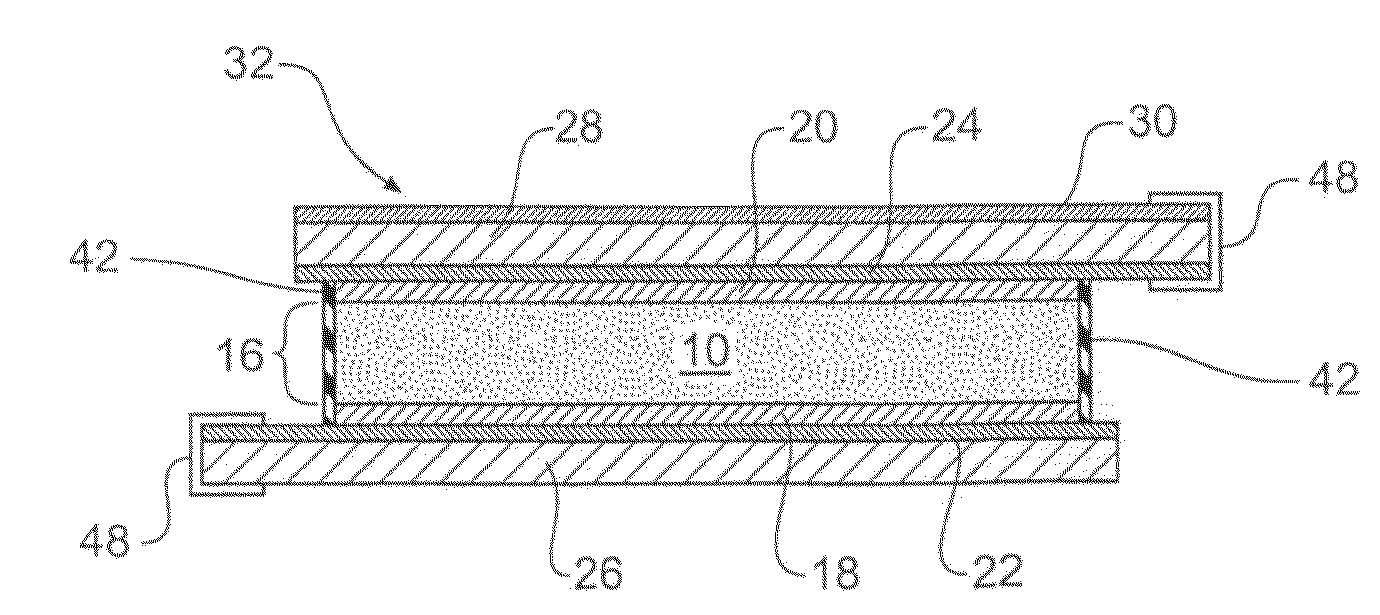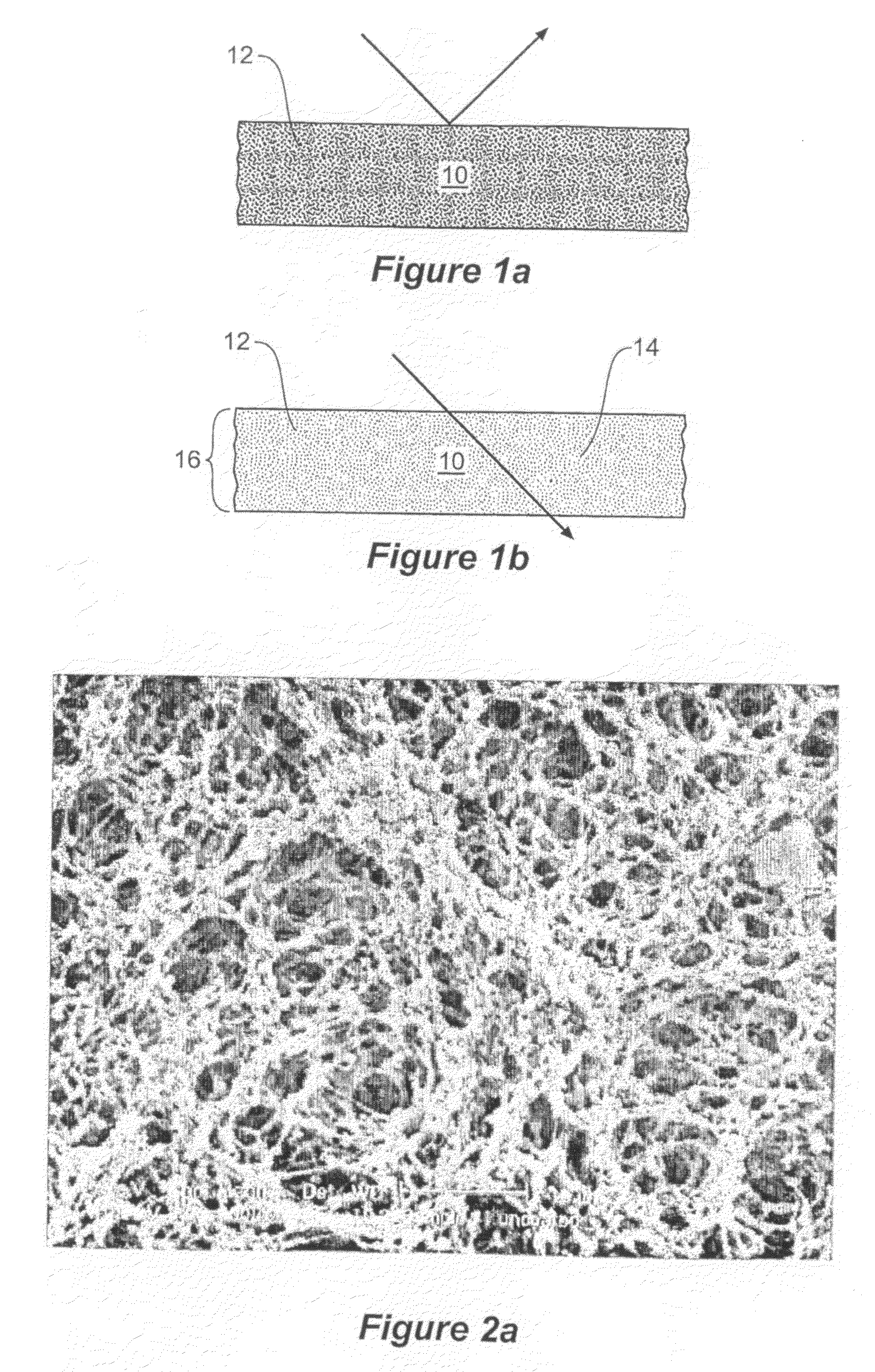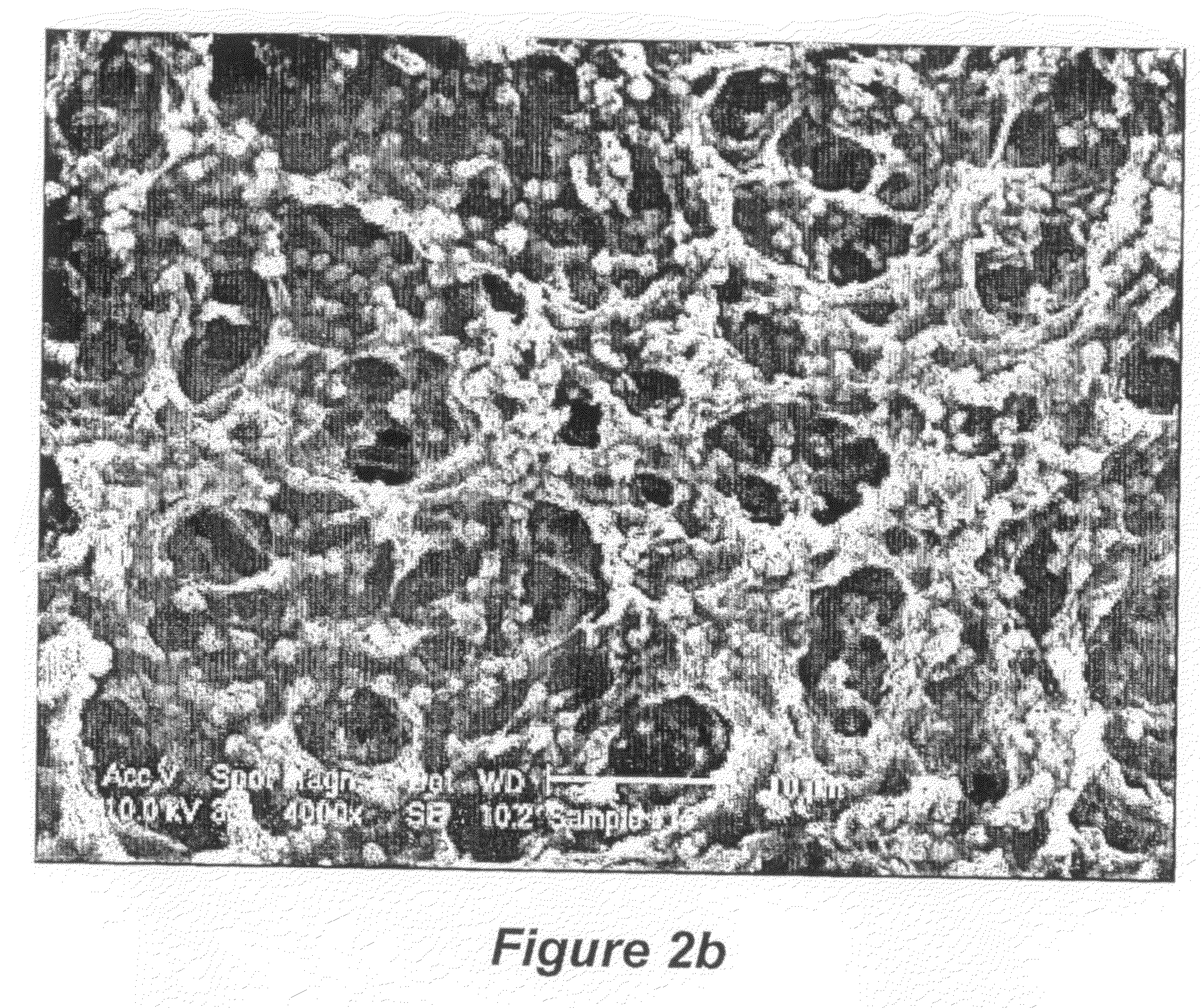Charge conducting medium
a conducting medium and charge technology, applied in the direction of instruments, coatings, lamination, etc., can solve the problems of reducing glare, presenting a problem to the driver in the rearview mirror, permanently reducing the window's light transmissivity, etc., and achieve the effect of improving the conductivity of the electrochromic layer
- Summary
- Abstract
- Description
- Claims
- Application Information
AI Technical Summary
Benefits of technology
Problems solved by technology
Method used
Image
Examples
example 1
[0153]In one example of the present invention a glass support (measuring 30 cm×30 cm) with a thin ITO film acting as an electrode and a metallic strip (indium solder) running down one edge, making up the first electrode had poly(3,4-ethylenedioxythiophen) / poly(styrenesulfonate), Aldrich Cat no. 483095 (PEDOT) airbrushed onto it.
[0154]A second glass support (measuring 30 cm×30 cm) with an ITO electrode with another metallic strip (indium solder) running down one edge had Polypyrole (PPY) airbrushed on. The loading of the conducting polymers on the electrodes was determined via transmission measurement of the individual electrodes in a spectrophotometer (Hunterlab Colorquest XE). For PEDOT an optimum loading corresponded to 55% photopic transmission and for PPY an optimum loading corresponded to a photopic transmission of 60%. It has been determined, through Transverse Electron Microscopy that this equates to film thicknesses around 100 nm.
[0155]The electrodes were brought together ar...
example 2
[0159]In another example of the present invention a glass support (measuring 10 cm×10 cm) with an ITO electrode and a metallic strip running down one edge, making up the first electrode had PRODOT deposited on it. A second glass support had Polyanline airbrushed onto it.
[0160]The electrodes were brought together around the PVDF (polyvinylidene difluoride) membrane infused with ionic liquid (1-ethyl-3-methyl imadozolium bistrifluoromethane sulfonimide).
[0161]The assembly was sealed with a two part epoxy resin. A potential of 1.5V was applied to the metallic strips (busbars). A substantial uniform darkening occurred and on reversal of the potential a substantial uniform lightening occurred. The response time for each transition was in the order of 1 second.
example 3
[0162]In another example of the present invention a polyethylene terephthalate support (measuring 7 cm×7 cm) with an ITO electrode and a metallic strip running down one edge had PEDOT airbrushed on. The second support (measuring 7 cm×7 cm) also with a metallic strip had PPY airbrushed onto it.
[0163]The electrodes were brought together around the PVDF (polyvinylidene difluoride) membrane infused with ionic liquid (1-ethyl-3-methyl imadozolium bistrifluoromethane sulfonimide).
[0164]The assembly was sealed with polyurethane glue and a potential of 1.5V was applied to the metallic strips (busbars). A uniform darkening occurred on reversal of the potential a uniform lightening occurred. The assembly was flexed around a diameter of approximately 100 mm and continued to operate.
PUM
| Property | Measurement | Unit |
|---|---|---|
| diameter | aaaaa | aaaaa |
| diameter | aaaaa | aaaaa |
| pore size | aaaaa | aaaaa |
Abstract
Description
Claims
Application Information
 Login to View More
Login to View More - R&D Engineer
- R&D Manager
- IP Professional
- Industry Leading Data Capabilities
- Powerful AI technology
- Patent DNA Extraction
Browse by: Latest US Patents, China's latest patents, Technical Efficacy Thesaurus, Application Domain, Technology Topic, Popular Technical Reports.
© 2024 PatSnap. All rights reserved.Legal|Privacy policy|Modern Slavery Act Transparency Statement|Sitemap|About US| Contact US: help@patsnap.com










